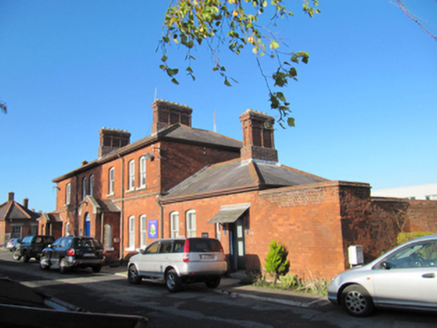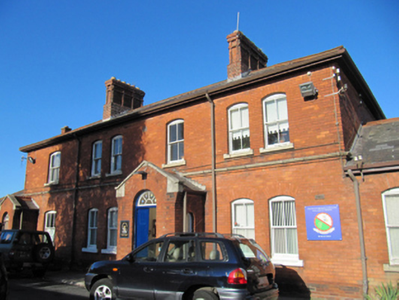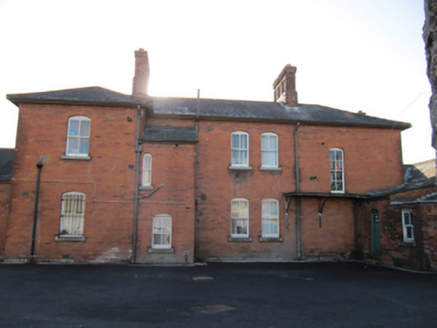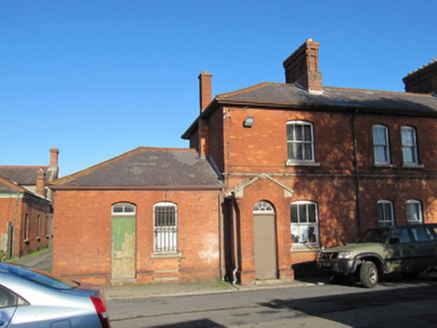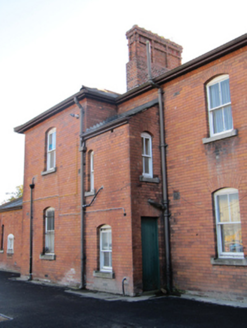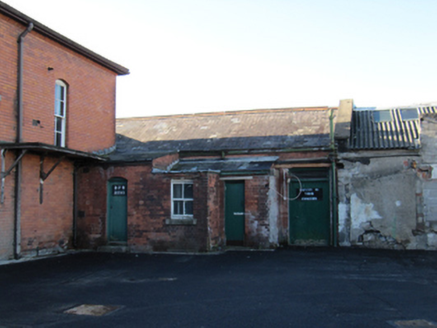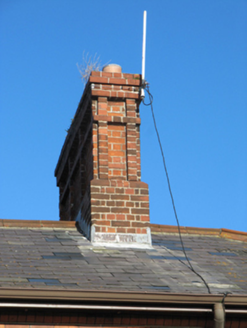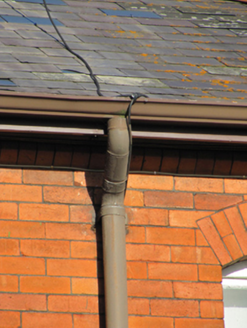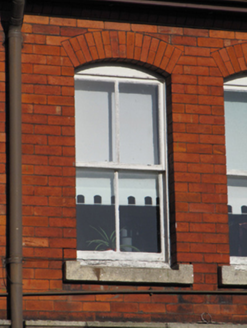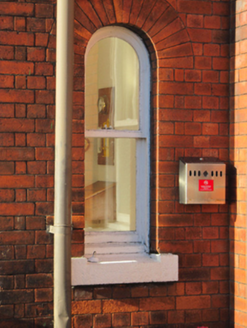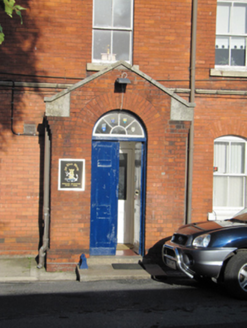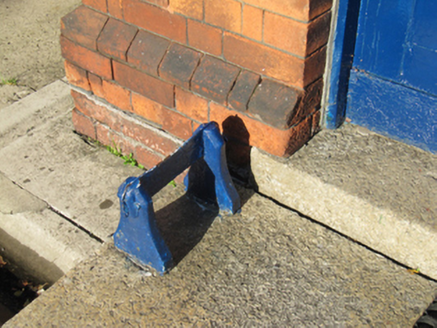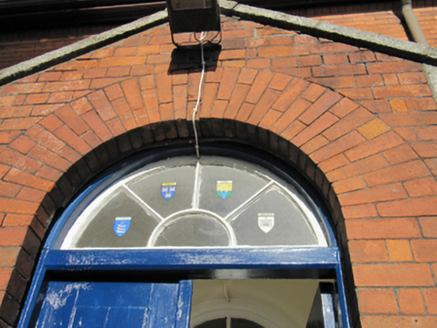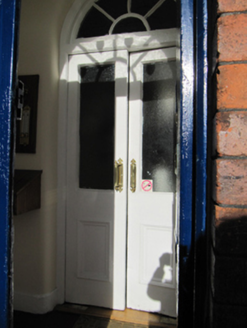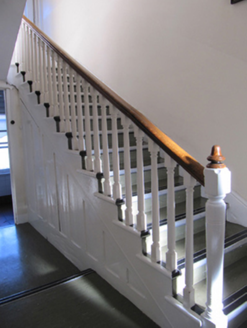Survey Data
Reg No
50081029
Rating
Regional
Categories of Special Interest
Architectural, Social
Previous Name
Portobello Barracks
Original Use
Office
In Use As
Office
Date
1880 - 1900
Coordinates
315204, 232011
Date Recorded
18/11/2013
Date Updated
--/--/--
Description
Detached six-bay two-storey military offices, built c.1890, having gabled single-storey porches to front (south) elevation, single-storey wing to west elevation, single-storey two-bay block to east elevation, and projecting end-bay to east end to rear elevation. Now in use by naval reserve. Two-storey lean-to porch to rear. Hipped slate roofs with moulded terracotta ridge tiles, red brick chimneystacks, moulded brick eaves course and cast-iron rainwater goods. Red brick laid in stretcher bond to walls of main block, laid in English bond to wings and porches. Carved granite string course to main block, with red brick plinth course throughout. Segmental-headed window openings with granite sills and four-over-four pane, three-over-three pane, two-over-two pane and one-over-one pane timber sash windows, some with steel bars. Round-headed door opening to front porch, having double-leaf timber panelled door, fanlight, and granite step with cast-iron bootscrape. Double-leaf half-glazed timber panelled door and fanlight within porch. Round-headed window openings to east and west elevations of porch, having granite sills and one-over-one pane timber sash windows. Round-headed door opening to porch to west, with fanlight and blocked opening. Segmental-headed door opening to front of west wing, having timber panelled door and overlight. Segmental-headed door opening to front of east block, having timber panelled door, granite step, and canopy supported on steel braces. Square-headed door opening to west of porch to rear, having timber battened door. Staircase to interior of front hall, with carved timber balustrade.
Appraisal
Portobello Barracks was constructed at the beginning of the nineteenth century as a cavalry barracks. It was taken over by Irish troops in 1922, and became the Headquarters of the National Army, under the leadership of Michael Collins. It was renamed Cathal Brugha Barracks in 1952, after the Chief of Staff of the Irish Republican Army during the War of Independence, and Ceann Comhairle of the first Dáil in 1919. The form and design of this building makes it a strong addition to the complex, and its architectural style is typical of late nineteenth century military architecture. Much of its early fabric has been retained, including timber sash windows, timber doorcases and carved granite detailing, which adds to its traditional character.
